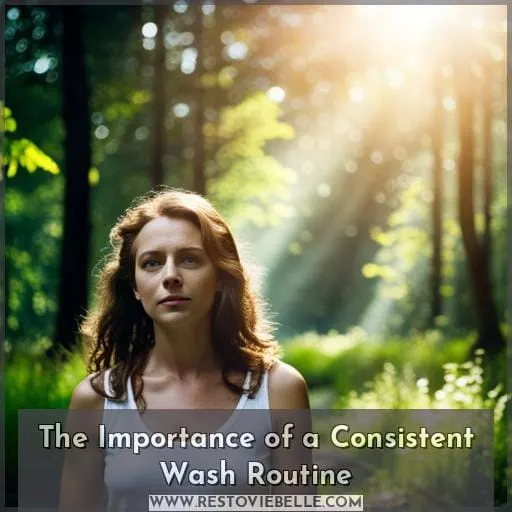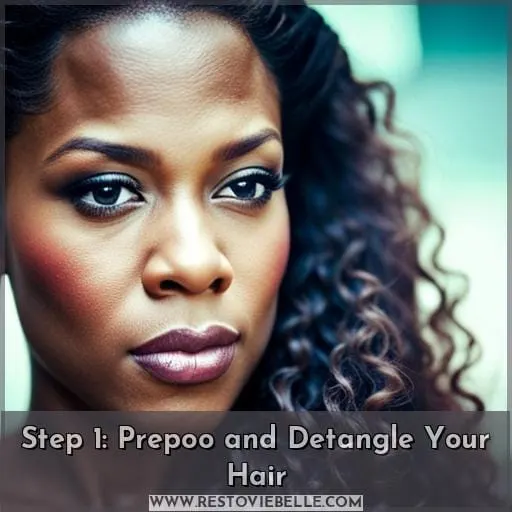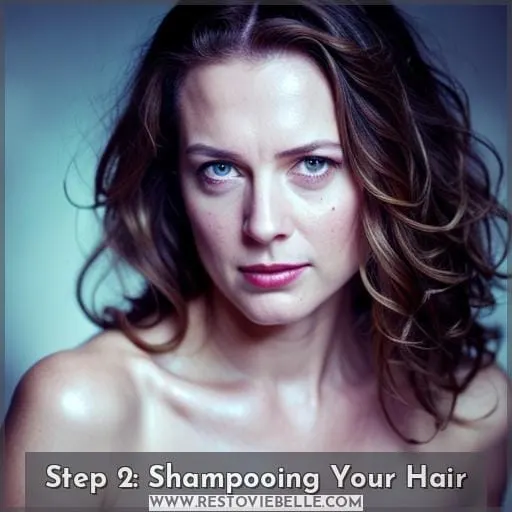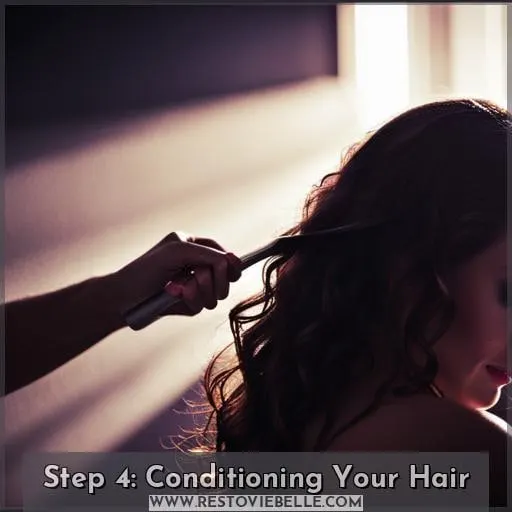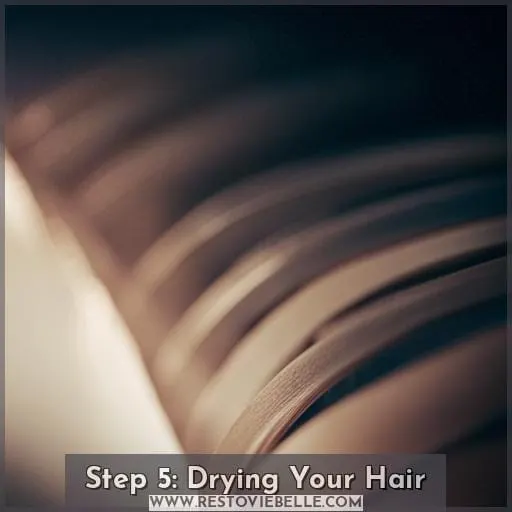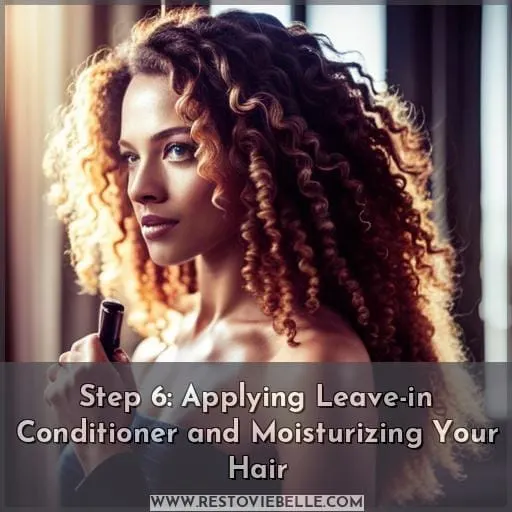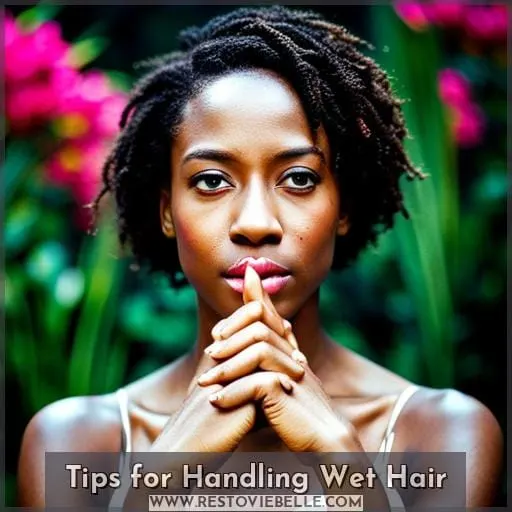This site is supported by our readers. We may earn a commission, at no cost to you, if you purchase through links.
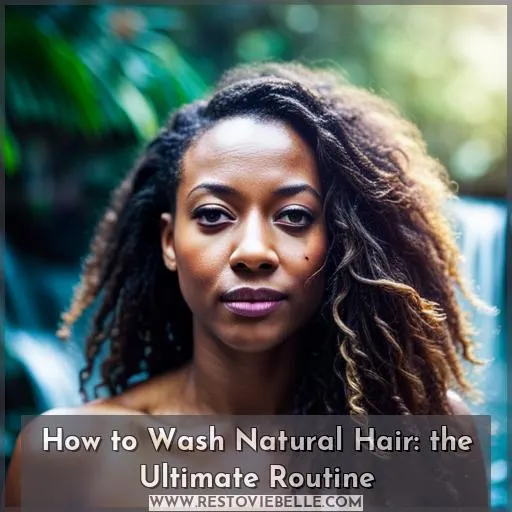 Are you looking for the ultimate way to wash your natural hair? If so, you’ve come to the right place. Washing and taking care of your natural hair is an important part of having healthy locks – but it can be tricky if you don’t know what steps to follow or which products are best.
Are you looking for the ultimate way to wash your natural hair? If so, you’ve come to the right place. Washing and taking care of your natural hair is an important part of having healthy locks – but it can be tricky if you don’t know what steps to follow or which products are best.
That’s why we’re here: with this article, we’ll share all our tips on how to wash natural hair properly and efficiently! We’ll cover everything from pre-pooing and detangling through conditioning, drying techniques, leave-in conditioners, and moisturizing tips that will help keep your curls nourished all week long.
So get ready as we provide a step-by-step guide on how best to cleanse those tresses!
Table Of Contents
- Key Takeaways
- The Importance of a Consistent Wash Routine
- Step 1: Prepoo and Detangle Your Hair
- Step 2: Shampooing Your Hair
- Step 3: Tea Rinse for Less Shedding and More Shine
- Step 4: Conditioning Your Hair
- Step 5: Drying Your Hair
- Step 6: Applying Leave-in Conditioner and Moisturizing Your Hair
- Tips for Handling Wet Hair
- Conclusion
Key Takeaways
- Regular washing is crucial for the health of natural hair.
- Use sulfate-free shampoos for gentle cleansing.
- Pre-pooing and detangling are essential steps.
- Use oils like coconut or argan to seal in moisture.
The Importance of a Consistent Wash Routine
Developing a consistent wash routine is essential for ensuring the health and vibrancy of your curls, while avoiding excessive breakage or dryness. Maintaining healthy hair starts with choosing the right products that won’t strip away natural oils, such as sulfate-free shampoos and lightweight conditioners.
When washing natural hair, use warm water to open up the cuticles so that shampoo can penetrate deeply into strands to remove dirt and product buildup. For extra hydration, try doing a tea rinse before conditioning. Steep either black or green tea in hot water for 5 minutes, then let it cool before pouring over the scalp and massaging through strands from roots to ends.
After rinsing out conditioner, be sure to seal moisture in with light oils like coconut oil or argan oil. Additionally, add leave-in conditioners if necessary, but take precaution not to apply too much on the scalp as this can cause build-up over time, leading to dandruff issues later down the line.
Lastly, avoid using DIY treatments without proper research beforehand, as some ingredients may contain harsh chemicals that could damage the curl pattern, thus causing more harm than good when attempting to achieve beautiful, bouncy curls!
Step 1: Prepoo and Detangle Your Hair
Before washing, give your hair the TLC it deserves by pre-pooing and detangling – no matter how intimidating that might seem! Prepooing with a leave-in conditioner or oil helps to reduce breakage, protect against split ends, and keep moisture locked in.
Detangling can also be done in preparation for wash day using special wet brushes like the Wet Brush Detangler brush.
Hair products such as Carol’s Daughter Shampoo Rose Water Micellar are great options when you need deep cleansing without stripping away moisture from natural curls, kinky, or coily strands.
If you’re looking for DIY pre-poo recipes, try diluting apple cider vinegar before applying it to your scalp. Opt for hydrating ingredients like avocados or honey instead of store-bought moisturizers, which can lead to buildup over time.
To further enhance your pre-poo routine, consider adding scalp oils such as Moroccanoil Clarifying Shampoo into your washday regimen. Avoid excessive pressure when brushing through tangles with tools like the Black Detangler Brush Felicia Leatherwood.
Finally, finish up by following up conditioning sessions with lightweight natural oils that will help seal in even more moisture!
Step 2: Shampooing Your Hair
Now that you’ve prepped your hair for a wash day, it’s time to choose the right shampoo. Depending on your hair type and condition, there are different types of shampoos available. For natural curly, kinky, or coily hair, opt for sulfate-free formulas as they’re gentler on the scalp and won’t strip away its natural oils like regular shampoos can.
Clarifying formula is great if you need to remove product buildup from styling products or hard water deposits, while co-washing (conditioner only washing) helps maintain moisture in dry strands without over-stripping them of their precious oils.
How often should one shampoo? It depends on how often you style and what kind of environment you live in, but generally, biweekly is enough when maintaining an effective haircare routine with proper techniques.
Here’s a bullet list of 5 points about how to properly shampoo:
- Choose the right type – sulfate-free/clarifying/co-wash
- Use lukewarm water when rinsing
- Avoid scrubbing too harshly
- Work up a rich lather before rinsing off
- Follow up with moisturizing leave-in conditioners
Step 3: Tea Rinse for Less Shedding and More Shine
Give your hair an extra boost of shine with a tea rinse before conditioning – it can reduce shedding by up to 45%! A tea rinse is a great way to add strength and luster back into natural hair. It helps strengthen the follicles, restore moisture balance, and increase manageability.
Plus, regular use of tea rinses will help keep your wash day routine on track for optimal health and texture maintenance.
Tea Rinse Benefits:
- Strengthens Follicle Strength
- Hydrates Hair Shafts
- Stops Hair Shedding
- Restore Moisture Balance
- Increase Manageability
Tea Rinse Method:
- Brew 1 cup cooled herbal blend in 2 cups boiling water
- Add cooled herbal blend to spray bottle
- Spritz onto scalp & strands
- Allow 10 minutes; then shampoo/condition as usual
Step 4: Conditioning Your Hair
After tea rinsing, apply a deep conditioner to your strands from roots to ends for maximum hydration. Conditioners provide many benefits for natural hair. They help smooth the cuticles and protect the scalp’s barrier layer.
Additionally, they provide nourishment by replenishing lost moisture and strengthen weakened strands caused by styling damage or environmental factors. Conditioners also restore shine and suppleness that can be affected due to dryness or product buildup over time.
When choosing a conditioner, make sure it is formulated specifically for your hair porosity level and desired results. Low porosity requires lighter formulas, while high porosity needs heavier hydrators like creams or oils with emollients that penetrate deeper into each strand of hair to effectively moisturize them without weighing them down too much at once.
For ultimate conditioning power, consider adding an extra step of applying a leave-in conditioner after washing.
Step 5: Drying Your Hair
When it comes to drying your hair, there are several options available. For a gentle approach, opt for drying with a t-shirt or microfiber towel. This will help reduce frizz and minimize breakage caused by vigorous toweling off of wet strands.
To retain moisture in the hair shafts, air drying is recommended over blow-drying whenever possible; however, if heat styling needs to be done, make sure to use diffuser settings and take necessary precautions when using hot tools on natural hair textures.
Drying With a T-shirt or Microfiber Towel
Gently dry your hair with a t-shirt or microfiber towel to ensure maximum moisture retention and reduce breakage.
Towels are more time-saving, but they absorb less water, leading to less moisture retention compared to t-shirts. On the other hand, air drying is highly recommended as it prevents heat damage, maintains hydration levels, and reduces frizziness that can occur when using high heat tools like blow dryers or hot combs.
To minimize the risk of breakage from prolonged use of hot tools, follow these tips: section off damp hair before drying, allow 10+ minutes for air drying prior to blow-drying if desired, and then proceed with low settings on diffuser attachments while scrunching small sections at a time.
Air Drying Vs. Blow Drying
Decide between air drying and blow drying to finish your wash day routine; each option offers its own advantages. Air drying can help retain moisture, while blow-drying is faster for those in a hurry.
Here are three tips to consider when deciding:
- Type of shampoo and conditioner: Opt for sulfate-free products that don’t strip the hair of moisture.
- Application method: Apply products from roots to ends with downward strokes, avoiding the scalp or taking extra care if using heat tools on curly hair types.
- Heat tool precautions: Use a lower setting when applying heat tools like flat irons or curling wands and take breaks during styling so as not to damage the strands due to excessive exposure.
DIY treatments such as apple cider vinegar diluted with water may also be used periodically instead of harsh chemicals found in store-bought brands because it helps prevent buildup without stripping away natural oils necessary for healthy tresses.
Step 6: Applying Leave-in Conditioner and Moisturizing Your Hair
When it comes to moisturizing your natural hair, there are a few key steps that should be taken. Start by oiling your scalp with lightweight natural oils like jojoba or almond oil to prevent dryness, and then follow up with applying a hair moisturizer to the strands of your hair.
Finally, seal in the moisture using another layer of lightweight oils such as argan or coconut oil for lasting hydration throughout the day.
Oil Scalp With Lightweight Natural Oil
To keep your scalp hydrated, use a lightweight natural oil to moisturize it. Natural oils are great for locking in moisture and preventing dryness while providing many other scalp oil benefits. These benefits include helping with dandruff, promoting hair growth, taming frizz, and protecting from damage.
You only need a few drops of the oil on your fingertips before distributing evenly throughout your scalp when washing or styling. Just make sure not to wash too often as over-cleansing can strip away healthy oils from the hair.
By using cleansing products paired with an effective lightweight natural oil, you can ensure that both your locks stay nourished and protected for beautiful-looking hair health!
Using Hair Moisturizer on Strands
After oiling your scalp, apply a moisturizer to the length of strands for extra hydration.
Benefits of moisturizing include preventing dryness, adding shine and softness to hair, and maintaining overall hair health.
When selecting a product, look for one that is lightweight yet hydrating, such as an aloe vera-based cream or coconut milk leave-in conditioner.
To get the most out of your products, use techniques like sectioning off small pieces at a time when applying them onto wet or dampened hair. This way, they can be evenly distributed throughout each strand from root to tip, which helps with maximizing moisture retention.
For best results, wash natural hair with leave-in conditioner, followed by using a lightweight moisturizer on strands afterwards to keep dryness away!
Sealing in Moisture With Lightweight Natural Oil
Smooth a lightweight natural oil over your strands to lock in moisture and create that glossy finish. Natural oils are packed with benefits for hair, including hydration and protection from harsh ingredients.
Selecting the right oil is important; look for ones that can penetrate the cuticle of each strand without weighing it down or leaving an oily residue on your scalp. Once you’ve selected an appropriate oil, apply it liberally throughout damp or dry curls using your fingers to ensure even distribution before styling as usual.
Tips for Handling Wet Hair
Before you start your wash routine, it’s important to properly detangle and section your wet hair. Detangling is especially necessary after wearing a protective style, as this will help prevent any tangles or knots from forming during the washing process.
To ensure healthy hair growth, try alternating between co-washing and shampooing each time you condition for maximum moisture retention.
Detangling Before Washing
Before washing, take the time to detangle your locks for a stress-free styling experience. Use specialized detangling techniques and products like brushes or combs to prevent hair breakage when combing through your curls.
Make sure you moisten the hair with warm water first as this helps make it more manageable while wet and prevents an unpleasant smell from forming after sweating in natural styles during summer months.
Finish by cooling rinsing with cool water, which allows for maximum conditioning of the scalp and hair follicles without being overly drying on strands.
Invest in quality products that are specifically designed for natural hair care so you can get optimal results each wash day!
Sectioning Hair to Prevent Tangling
Divide your mane into sections like a puzzle so that you can unravel tangles with ease. Separating strands allows for concentrated detangling and prevents painful snags on wet hair. Start by sectioning the top of your head vertically into four parts. Then divide each part horizontally, as if cutting a pie into slices.
Rotating Between Co-washing and Shampooing
Rotate between co-washing and shampooing to keep your hair clean, healthy, and hydrated. Co-washing benefits include retaining more natural oils in the scalp. Choose a co-wash that is sulfate-free for less stripping of moisture from the strands.
Shampooing frequency should depend on how often you use styling products or sweat heavily due to exercise or outdoor activities, as too much buildup may occur without regular cleansing with a clarifying shampoo.
Selecting an appropriate shampoo also depends on hair type. Thick, curly/kinky hair needs more moisturizing than straight, fine types do.
Finally, understand that while both shampoos and conditioners have their place in haircare regimes, knowing when best to use each will help ensure maximum results!
Conclusion
With a consistent wash routine, you can keep your natural hair looking and feeling its best. Prepoo and detangle your hair using a gentle brush as the first step. Then, clean your scalp with a sulfate-free shampoo.
A tea rinse before conditioning can help reduce shedding and add shine. When conditioning, apply the product from the roots to the ends. Gently dry your hair with a t-shirt or microfiber towel. Consider air drying for maximum moisture retention.
Finally, apply a leave-in conditioner and moisturize your strands with oil and a hair moisturizer. Detangle before washing, section your hair, and alternate between co-washing and shampooing to maintain the health of your natural hair.
Achieve beautiful, healthy, and protected natural hair with the right wash routine.
